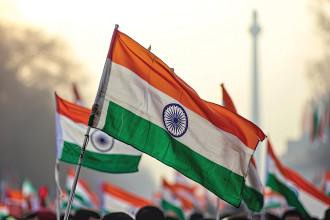
A few weeks ago, I wrote an article about why the Bernie Sanders plan to legislate a four-day workweek while keeping pay the same was doomed to fail. You can read the article for more detail, but the summary is that economic fundamentals determine wages – not the government.
In response to that, I received an ‘Ask an Economist’ question from one of FEE’s readers – Larry L. He says: On the same lines of Bernie’s work hours reduction, there are claims that historically humans used to work 15–hour workweeks long ago. I cannot imagine that being plausible being that the levels of technology and knowledge were much, much lower. But it seems to correlate to this same kind of socialist-like thinking: we can have the same amount of stuff without the same effort. What are your thoughts?
Larry brings up an interesting argument against our modern culture of work. Could we work less and have the same standard of living? The answer is a clear no. If society as a whole decided to work less, our standard of living would fall significantly on many important margins.
But in order to examine the claim fully, we have to look at it in more detail. Let’s see the evidence for a 15-hour workweek.
15 for Survival
I was surprised by Larry’s question, because I had never heard the claim that humans used to work only 15 hours every week and survive. I had heard the general idea, but 15 hours seemed very specific. So, I did some research.
I found work by James Suzman who has written or is featured in several articles on the Ju/’hoansi people of Namibia. Suzman bases his articles on his own research as well as the research of Richard B Lee. The first article for Inc. is provocatively titled, ‘For 95 Percent of Human History, People Worked 15 Hours a Week. Could We Do It Again?’
So, does this research find that the Ju/’hoansi people worked 15 hours and maintained the same quality of life as those who work 40 hours in the United States? No. In an interview with Ezra Klein, Suzman himself admits the people were ‘deeply impoverished by modern standards’. So, when we compare their workweek to ours, we aren’t comparing apples to apples.
However, Suzman also claims, “And yet they consider themselves affluent and enjoyed a degree of affluence as a result of that.” We’ll return to that point later.
For now, let’s focus on the ways in which the Ju/’hoansi were deeply impoverished.
Let’s start with the 15-hour number. First of all, it should be noted that that number is how long it takes for the Ju/’hoansi to hunt and gather food each week. The Ju/’hoansi live a subsistence life. Those hours do not purchase them advanced medicine, shelter, electricity, internet, vehicles, etc. My suspicion is that many socialist-leaning folks who would advocate a 15-hour workweek would also call healthcare, housing and internet a human right.
Furthermore, as a matter of fact, by Richard B Lee’s own research, this number is incorrect. According to Lee’s research, men spend 21.6 hours of work per week in subsistence gathering, and women spend 12.6. This averages out to 17.1 hours. That’s not all, though. Lee points out that this doesn’t include the time to make and fix the tools used to hunt and gather. When you add in those hours, the average workweek for the Ju/’hoansi rises to 23.4 hours. At this point, I should highlight that working hours in the US are around 33.8 per week. That’s only 10 hours per week more.
Lee claims that ‘we should also remember that when Western economists calculate on-the-job work time, they do not include this type of work in their figures’. But this isn’t true. While people in the US use different tools to work than hunter-gatherers, tool creation and repair times are accounted for in average working hours. If the work computer has problems, are you expected to fix it at home on your own time? No. Either you fix the problem or someone else is hired to fix it (which increases his average working hours). Tool creation and fixing time are accounted for!
Lee also tracks the amount of housework separately, and this is where Lee would be correct that this number isn’t directly included in Western economists’ calculations, so there’s no need to add in this additional time for the Ju/’hoansi.
So how does this stack up against the West? Well, the Ju/’hoansi trade 23.4 hours per week for enough food to survive. In the United States, consumers spend a little less than 12% of their income on food. Since Americans work 33.8 hours, this means that they spend 4.1 hours (33.8 x 12%) working for their food per week. This is much less time than that spent by the Ju/’hoansi.
But what about housing? Well, the Ju/’hoansi often put-up what Lee describes as temporary huts. Comparable subsistence housing and the small amount of land it requires in the US would be a negligible percent of a person’s budget.
At this point I’d expect some objections based on the fact that Americans aren’t allowed to build subsistence housing on just any tiny land parcel. That’s true, but we should qualify this with two things.
First, even with luxurious, capital-intensive housing in the US, Americans still only spend 33% of their income on housing. This equates to 11.2 hours of work per week. Adding this together with the 4.1 hours per week working for food still results in Americans working fewer hours.
Second, insofar as housing standards in the US are too high, this is a problem of the legal system and zoning rather than the economic system.
Subsistence living may be more legally difficult in the US due to cumbersome regulations, but it’s actually economically much cheaper and would require fewer hours of work based on the data above.
Of course, this isn’t the only issue. Remember, the 23.4 hours of the Ju/’hoansi do not purchase them modern medicine or extensive protection from elements. Suzman’s research has revealed, ‘the Ju/’hoansi were revealed to be well fed, content, and longer-lived than people in many agricultural societies’.
How long-lived were they? It’s hard to find an exact answer, but it’s clear that their life expectancy was far below what ours is in the United States. Adam Kuper wrote for the Wall Street Journal that the research of Richard Lee in 1963 found that ‘life expectancy at birth among the Ju/’hoansi was 36. If a person was still alive at 15, he or she could expect to survive beyond 60’.
Lee argues that that was better than many agricultural societies of the time (such as those in Europe). However, for our purposes, we’re interested in comparing those numbers to the United States today, since the claim under scrutiny is whether we could work for 15 hours per week and be just as well off as we are when working 34.
Our modern medical accomplishments were caused by people working above subsistence levels to make new discoveries which have permanently improved the well-being of humanity. Today, life expectancy in the US is 77 years, and life expectancy for people still alive at 15 is 80 years.
Life expectancy being about 60 years for those who make it to 15 doesn’t sound too bad, but how does that work if the average life expectancy is only 36 years? In short, many Ju/’hoansi infants and children died very young. This piece of information by itself is enough for me. Would you be willing to work 10 or even 20 more hours per week to reduce significantly the chance that your children would die? I know my answer.
Some may argue that it’s imaginable that life expectancy could improve for a subsistence hunter-gatherer group, but there is no case which evidences this. Again, our medical advancements have come from working to achieve human flourishing above subsistence levels.
If the Ju/’hoansi life expectancy is the outcome of a 23.4-hour workweek, I’ll stick with my 33.8 hours.
Wanting Less?
The reason I spend so much time on health outcomes is that they seem to be a universally accepted sign of flourishing. Everyone would prefer their children have healthy, long lives.
I haven’t spent much time at all highlighting that your daily activities, including reading articles like this, wouldn’t exist in a subsistence world. Much time is spent arguing that the modern luxuries we enjoy (TV, vehicles, internet, etc.) are unnecessary, and that we would be just as happy without them. Proponents of moving to a more subsistence-based lifestyle argue that people like the Ju/’hoansi appear to be happy and content without much of the things we work for. In fact, many argue that the rise of technology and social media have fuelled anxiety and depression in young Americans.
I am not unsympathetic to the idea that there is an over-focus on material well-being in the US. I do believe that people can overvalue the material at the expense of more important non-material goods. (‘For what does it profit a man to gain the whole world and forfeit his soul?’ Mark 8:36).
At the same time, I am extremely skeptical of the view that working at a subsistence level is the direction to go for several reasons. First, there is a reason it takes modern Americans fewer hours to purchase subsistence food and shelter than any people in history. This situation has come about because our ancestors worked more than a subsistence level. The knowledge and infrastructure they created allows for our better life, and if we don’t work to maintain them our standard of living will fall. We stand on the shoulders of capital goods.
Second, the standard of living in subsistence hunter-gatherer tribes who work 15 hours is not comparable to our modern standard of living, and this is most salient with respect to the fact that people, especially children, live much longer in societies which work more.
Finally, I am skeptical of claims that we’d be happier if we worked less and accepted a lower standard of living because most people reveal by their actions that they don’t believe that. People are happy to work harder to give better lives to their children and grandchildren. This is demonstrated again and again throughout human history. Talk is cheap. People can say they prefer to work just enough to get by, but they tend to demonstrate they want to work a lot more.
Similar to the end of my previous article on the four-day workweek proposal, I’ll end with a simple claim. The free-market system has proven itself to be the best system for simultaneously increasing human flourishing while at the same time decreasing the number of hours people work. So, to answer Larry’s question, the only way we’ll get to a world where we can work 15 hours for the same standard of living is by continual improvements fostered by the free-market system.
Source: fee.org



-1758107444.jpg)


